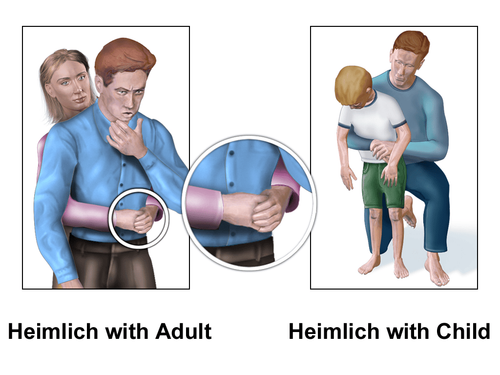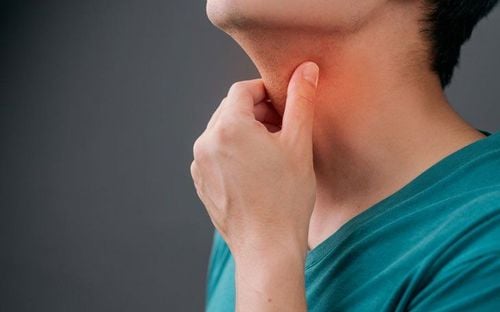This is an automatically translated article.
The article was professionally consulted with Master, Doctor Dang Huy Toan - Pediatrician - Neonatologist - Department of Pediatrics - Neonatology - Vinmec Nha Trang International General Hospital.Forgotten airway foreign body is not uncommon accident in all ages, especially in children. The most common foreign objects that children easily choke on are bones, fish bones, toy pieces, nuts, etc. This is a very dangerous choking situation because it can be fatal if left untreated. timely emergency treatment.
1. What is a forgotten airway foreign body in children?
A foreign body in the airway is a term that refers to a case where a foreign object enters the patient's larynx, airways or bronchi. Foreign bodies are divided into two types, organic and inorganic.Foreign body in the airways is classified as an emergency in otolaryngology, although it can be seen at any age, it is common, especially in children aged 10 to 24 months (approximately 80%). This is a common and especially dangerous life accident because it can cause death or leave severe sequelae in children if not examined in time.

Dị vật đường thở có thể gây biến chứng nặng nề cho trẻ
2. Causes of forgotten airway foreign body in children
Neglected foreign bodies in the airways in children are caused by many causes, choking on foreign bodies is not only in solid form (such as toys, some nuts, ...) but also in liquid form (such as porridge, milk,...). Some of the following situations can be the cause of the introduction of a foreign body into the child's body:The child is eating or holding food or a toy in his mouth, due to some impact, the child takes a deep breath and suddenly causes the object to follow airflow falling into the airways; Foreign objects are mixed in the process of children eating and drinking; Actions such as crying, laughing, tripping, ... when there is food in the mouth; Parents let children take the medicine improperly, instead of crushing it so that the child can take it whole; Children choke while eating. SEE ALSO: First aid for foreign bodies - choking
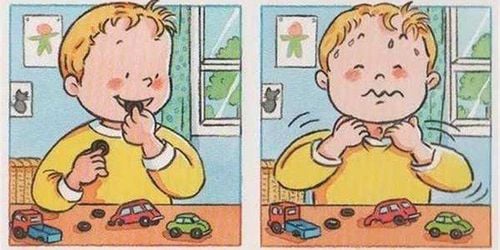
Ngậm đồ chơi có thể khiến trẻ bị dị vật trong đường thở
3. Symptoms of forgotten airway foreign body in children
Depending on the location of the foreign body in the child's airway, symptoms can vary significantly. However, if the foreign body is stuck in the larynx or trachea, the child often has the following manifestations:The child has respiratory distress or stridor; Coughing up, coughing up blood that persists for a long time; Some other manifestations may accompany such as panic, agitation. Besides, parents need to pay attention if the child hugs his neck and shows signs that he is choking.
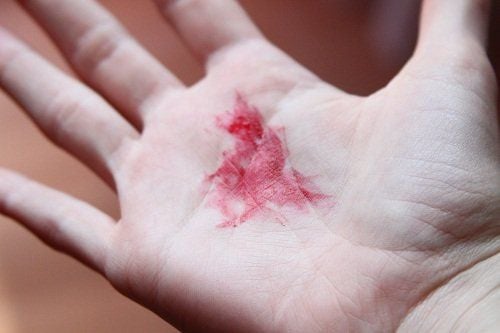
Trẻ ho ra máu là dấu hiệu của dị vật đường thở bỏ quên ở trẻ
4. Diagnosis of forgotten airway foreign body in children
4.1. Clinical examination
Identify infiltrative syndrome:Infiltration syndrome is caused by reflex contraction of the larynx to prevent the foreign body from descending and the reflex of continuous coughing to expel the foreign body. Physicians can exploit infiltrative syndrome in about 93% of patients. Identify systemic symptoms such as difficulty breathing, fever.
Identify functional and physical symptoms, thereby determining the location of the stuck foreign body:
Foreign body in the larynx; Foreign body in trachea; Foreign body in the bronchi.
4.2. Subclinical
Blood tests are of little value in diagnosing neglected airway foreign bodies in infants, but can provide information about inflammation in the presence of an elevated polymorphonuclear leukocyte count.A lateral neck X-ray or a straight chest X-ray allows for the detection of a forgotten foreign body in the airway. However, for non-contrast foreign bodies such as metal, bone, teeth, etc., it is relatively difficult to detect.

Xét nghiệm máu là một chẩn đoán cận lâm sàng được thực hiện
4.3. Implementing the quadrants
First, infiltrative syndrome is the golden sign in the diagnosis of neglected airway foreign bodies in children.Ask the patient and do a physical examination: to assess the condition as well as diagnose and locate the area where the foreign body is stuck. Listening to the lungs shows the location of the foreign body and the degree of inflammation in the lungs:
Foreign object in the larynx: On both sides of the lungs, a snoring sound will be heard, spreading from the top down, due to poor ventilation, sometimes Decreased alveolar murmur was observed in both lungs. Tracheal foreign body: Hissing sound is heard in both lungs along with a popping sound. Bronchial foreign body: Unilateral or decreased alveolar murmur is heard. If an infection is present, moist crackles and crackles may be heard.
4.4. Differential diagnosis
Pneumonia: Common symptoms are intermittent cough, hear the lungs with moist rales. Image of inflammation in both lungs on lung film. Atelectasis: Tumors and infections are the causes of atelectasis. SEE ALSO: First aid instructions for children with a foreign body in their airways5. Treatment of forgotten airway foreign body in children
5.1. The principles of treatment
Get emergency foreign body. Respiratory support. Treatment of complications.

Lấy dị vật cấp cứu là một nguyên tắc điều trị
5.2. First aid
When detecting that a child has a forgotten or suspected foreign body in the airway, it is necessary to base on the following symptoms of the child to handle.5.2.1 The child has symptoms of dyspnea or mild dyspnea
In this case, it is necessary to avoid intervention because it can cause the child to stop breathing suddenly due to a foreign object moving in the airway. Children should immediately be taken to the ENT specialist for timely examination and treatment.5.2.2 The child develops symptoms of severe dyspnea or stops breathing
For infants under 12 months of age: give rescue breaths (such as CPR) to help open the airway, then perform chest compressions.For children over 12 months old and older children: use the Heimlich maneuver
The child is still awake: The rescuer stands behind the patient or kneels on the child's back, then puts his arms around the patient's waist . A clenched hand is placed in the epigastrium, the other hand is covered with support. Sudden strong pressure on the epigastrium in the direction from front to back and from bottom to top about 5 times continuously. Child in a coma: The paramedic immediately places the child on his or her back, head low, and tilted to one side. Two overlapping hands are placed under the child's sternum, pressing firmly in the direction of the patient's head about 4-5 beats / 1 time. The Heimlich maneuver is used to help expel air from the lungs and push the foreign body out of the glottis. However, if the Heimlich maneuver is not effective after 6-10 trials, a percutaneous needle puncture technique or emergency tracheostomy can be used.
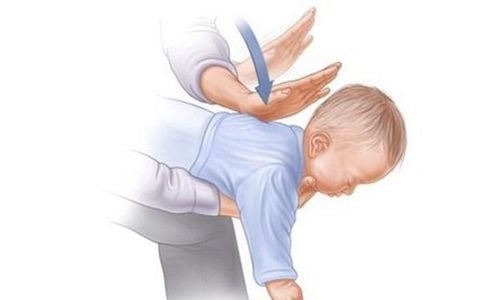
Thủ thuật Heimlich có tác dụng đẩy theo dị vật ra ngoài thanh môn
5.3. Specialized first aid
If the patient has signs of asphyxiation, perform artificial respiration, emergency tracheostomy. Bronchoscopy to pick up foreign body Effective treatment method: Bronchoscopy to pick up foreign body. Indications to use antibiotics, corticosteroids after endoscopy. Forgotten foreign body in children is a very dangerous disease if not examined and treated promptly. Adults should pay special attention, especially in the process of eating and playing, to avoid accidental choking on a foreign object. In addition, mastering the knowledge of prevention and management of airway foreign bodies in children should also be noted to be used in emergency cases where medical staff have not yet intervened.If in the process of a child choking on a serious foreign body in the airway, parents need to pay attention to choosing a pediatric facility with good medical expertise for quick, correct and timely treatment, ensuring the survival prognosis for the child. young.
The Emergency Department of Vinmec International General Hospital operates 24/24 on all days of the week, including Saturday and Sunday as well as holidays of the year. Accordingly, the team of emergency doctors and nurses at the Department are intensively and professionally trained, able to receive and handle urgent cases of patients, and always have coordination with all specialists. faculty quickly.
With modern equipment and a team of experienced doctors, the Emergency Department has conducted emergency and saved the lives of serious and complicated patients, pediatric diseases with foreign bodies with poor prognosis. At the same time, patients at the Emergency Department are always coordinated care by many other specialized specialties (Team Base Care). Therefore, at the Emergency Department, patients will be examined, diagnosed, accurately and quickly, with high reliability and intensive treatment right from the emergency stage to help them quickly get out of the critical stage. dramatic and stable.
Please dial HOTLINE for more information or register for an appointment HERE. Download MyVinmec app to make appointments faster and to manage your bookings easily.





